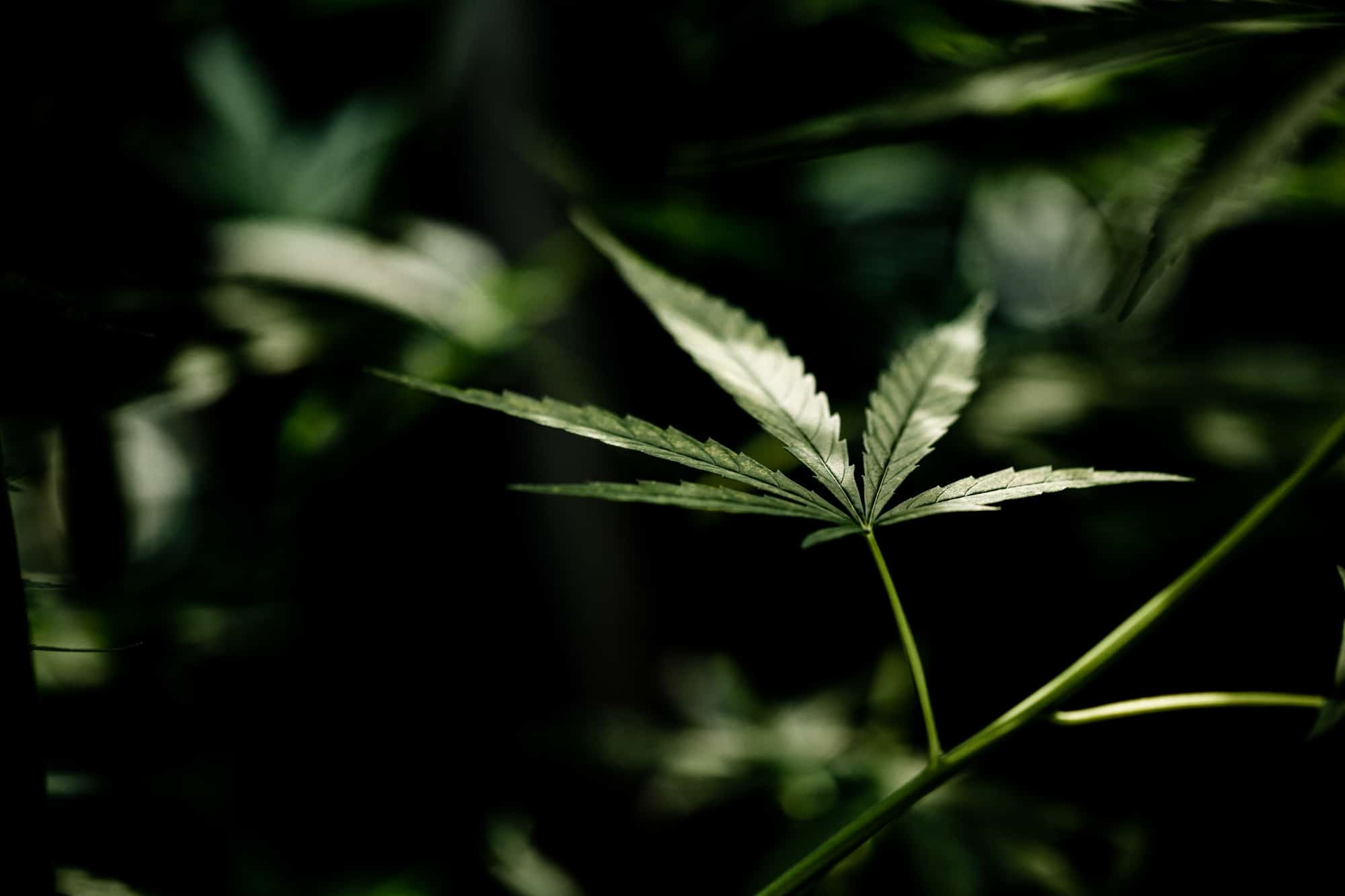
The world of cannabinoids continues to surprise us with discoveries that broaden our understanding of the many substances derived from cannabis. The recent discovery of CB9, a cannabinoid derived from CBD (cannabidiol), has sparked growing interest in the field. In this article, we explore the characteristics and potential of CB9, the newest addition to the already diverse family of cannabinoids.
What is CB9 Distillate?
CB9, a cannabinoid distillate, marks a significant advance in cannabinoid research. As a CBD derivative, it features a unique molecular structure, with a natural five-carbon tail. This structure gives it psychoactive properties, differentiating it from other cannabinoids, including CBD. Its detection is more complex than that of other cannabinoids, presenting an interesting challenge for scientific research.
Advantages of CB9 over other Cannabinoids
CB9, an emerging cannabinoid, has several distinct advantages over other cannabinoids, making it of particular interest in the field of cannabis and its derivatives.
Advantages of CB9 over other Cannabinoids
- Legal compliance: CB9 presents a promising option in areas where specific cannabinoids, such as HHC and THCP, are subject to legal restrictions. Its structure and chemical profile could enable it to bypass some of the legal limitations imposed on other cannabinoids, offering a legal alternative for users and distributors.
- Paradigm shift in research: As a new cannabinoid, CB9 opens up unprecedented prospects for scientific and medical research. It offers fertile ground for the study of new therapeutic applications, and could potentially contribute to significant advances in our understanding of cannabinoids and their effects on the human body.
- Psychoactive properties: CB9 shares similar psychoactive effects to cannabinoids such as Delta-8 THC, but with nuances that make it unique. This similarity offers consumers a new range of experiences, potentially less intense than those provided by more potent cannabinoids like D9-THC, while retaining a psychoactive profile.
- Need for cross-border alternatives: With the diversity of cannabinoid regulations around the world, CB9 could meet a growing demand for legal alternatives beyond national borders. Its potential compliance with international regulations would make it accessible in a wider range of markets.
- Stimulating research: The emergence of CB9 is prompting further exploration of the interactions between cannabinoids and the human endocannabinoid system. This research could unveil new medical and therapeutic applications, enriching our understanding of cannabinoids.
Comparison with other Cannabinoids
- Difference with HHC: Unlike HHC, which is known for its psychoactive effects and may be subject to restrictions, CB9 offers an alternative that can escape these legal limitations, while providing similar effects.
- Difference from D9-THC: CB9 differs from D9-THC, the most psychoactive component of cannabis. Although CB9 is psychoactive, it offers a different, potentially less intense experience, which may appeal to those seeking moderate psychoactive effects.
- Non-crystallization: An interesting feature of CB9 is its tendency not to crystallize, unlike some other cannabinoids. This property could have implications for its formulation in various products, affecting its solubility, stability and ease of use.
In conclusion, CB9 represents an exciting development in the world of cannabinoids. Its unique advantages in terms of legal compliance, research potential, psychoactive properties, cross-border viability and stimulation of scientific research make it a promising candidate for future medical and recreational applications.
Psychoactive effects of CB9
The psychoactive effects of CB9, which are similar to those of Delta-8 THC (D8) and Hexahydrocannabinol (HHC), represent a crucial aspect of this cannabinoid and contribute to its growing appeal. Here's a more detailed account of these effects:
Nature of CB9's psychoactive effects
- Moderation of effects: CB9 is distinguished by its psychoactive effects, which are considered moderate compared to Delta-9 THC (D9-THC), the most psychoactive component of cannabis. This moderation makes CB9 attractive to those wishing to experience psychoactive effects without the sometimes overwhelming intensity associated with D9-THC.
- Psychoactive experiences: CB9 users can expect psychoactive experiences that may include relaxation, euphoria or mildly altered sensory perception, similar to those experienced with D8 or HHC.
Comparison with other Cannabinoids
- CB9 vs. D9-THC: While D9-THC is often associated with powerful and sometimes debilitating effects, CB9 offers a more controlled, less intense experience. This may be particularly appreciated by new cannabinoid users or those sensitive to the stronger effects of D9-THC.
- CB9 vs D8 and HHC: CB9 shares similar effects to D8 and HHC, but with its own unique signature. This suggests that CB9 may offer distinct benefits or slightly different experiences compared to these cannabinoids.
Therapeutic and Recreational Potential
- Recreational use: Because of its moderate effects, CB9 can be an attractive choice for recreational use, especially for those seeking psychoactive experiences without the sometimes undesirable effects of D9-THC.
- Therapeutic use: Although research is still ongoing, CB9's therapeutic potential should not be overlooked. Its moderate psychoactive effects could be beneficial in the treatment of certain conditions, such as stress, anxiety or mild pain.
In summary, CB9 is positioned as an intriguing option in the cannabinoid spectrum, offering moderate psychoactive experiences. This characteristic makes it attractive to a wide range of users, from novices to cannabinoid connoisseurs, as well as those seeking alternatives to the more intense effects of D9-THC. Further research in this area will help us to better understand and exploit CB9's full potential, both recreationally and therapeutically.
Relationship with CBD
The relationship between CB9 and CBD is a topic of great importance in the study of cannabinoids, because although CB9 is derived from CBD, it has distinct characteristics both structurally and in terms of its effects. This distinction raises several interesting questions about the role of molecular structure in cannabinoid effects.
Structural Distinction and Psychoactive Effects
- Structural difference: CBD is known for its molecular structure, which does not produce psychoactive effects. CB9, although a derivative of CBD, has a significant structural modification which gives it psychoactive properties. This structural difference is a fascinating example of how small chemical modifications can profoundly alter the effects of a cannabinoid.
- Psychoactive effects of CB9: Unlike CBD, CB9 has psychoactive effects, making it interesting for different uses than CBD. This characteristic makes it more similar to other psychoactive cannabinoids like THC, but with its own intensity of effect.
Implications for Cannabinoid Research and Development
- Understanding Molecular Mechanisms: The relationship between CB9 and CBD prompts further research into the molecular mechanisms underlying the effects of cannabinoids. Understanding why and how these structural changes affect interactions with receptors in the endocannabinoid system may pave the way for new discoveries in the medical and therapeutic fields.
- Development of new cannabinoids: The differentiation of CB9 from CBD shows that it is possible to modify existing cannabinoids to obtain specific effects. This could inspire the development of new synthetic or semi-synthetic cannabinoids with targeted properties.
Therapeutic and Recreational Applications
- Therapeutic potential: Although CB9 has psychoactive effects, it could have specific therapeutic applications, potentially different from those of CBD. Its effect on mood, perception and sense of well-being could be exploited in the treatment of a variety of conditions.
- Recreational use: CB9 could also find a place in the recreational market, offering an alternative to traditional cannabinoids like THC, with moderate psychoactive effects.
In short, the relationship between CB9 and CBD illustrates the importance of molecular structure in determining the effects of cannabinoids. This distinction raises intriguing questions about the influence of chemical modifications on cannabinoid properties, and opens up new avenues for the research and development of compounds with a wide range of applications, both therapeutic and recreational.
Conclusion
The rise of CB9 to prominence in the cannabinoid landscape marks a significant and promising milestone for the future of these compounds. This cannabinoid, closely related to CBD but with distinct properties, opens up exciting new horizons for scientific and medical research. Indeed, its unique structure and moderate psychoactive effects are of particular interest to consumers and researchers alike.
Potential and prospects for CB9
- Innovation in Cannabinoids: CB9 represents a major advance in the understanding and use of cannabinoids. Its ability to offer moderate psychoactive effects positions it as an interesting alternative to more traditional cannabinoids.
- Therapeutic and recreational applications: CB9's unique properties make it suitable for use in a variety of contexts, from therapeutic to recreational. This could lead to innovations in the treatment of certain medical conditions or offer new experiences for recreational users.
Regulatory and liability issues
- Evolving Regulations: With the constant changes in cannabinoid laws, CB9 could present itself as a viable option where other cannabinoids are restricted or banned. This regulatory flexibility could greatly influence its adoption and popularity.
- Importance of Legal Compliance: It is imperative for users and distributors to keep up to date with local cannabinoid regulations. Compliance with these laws is essential to ensure the safe and responsible use of CB9.
Medical Consultation and Information
- Professional Consultation: Before exploring CB9 products, it's crucial to consult healthcare professionals. Their advice can help you understand the potential effects of CB9 on your health and avoid undesirable interactions with other treatments.
- Informing and Sharing Knowledge: The dissemination of reliable, scientifically-validated information on CB9 is fundamental to educating consumers and professionals alike. Sharing accurate knowledge will help demystify this cannabinoid and promote informed use.
CB9 is emerging as a key element in the future of cannabinoids, offering unique and innovative prospects. Its potential as a research subject, as well as the opportunities it offers consumers, underline the importance of an informed and responsible approach. Understanding its place in the regulatory framework and medical consultation are essential steps for those wishing to explore its applications. In short, CB9 represents not only a breakthrough in the field of cannabinoids, but also an opportunity to broaden our knowledge and choices when it comes to wellness and health.
2 Responses to "CB9: New Psychoactive Cannabinoid in the Spotlight"
Comments are closed
Categories
Products
-
 Rating 4.89 out of 5From 4.50 €/gr.42.50 € - 450.00 €
Rating 4.89 out of 5From 4.50 €/gr.42.50 € - 450.00 € -
 Rating 5.00 out of 5From € 49.90
Rating 5.00 out of 5From € 49.9064.90 €The initial price was €64.90.49.90 €The current price is €49.90. -
 Rating 3.00 out of 5From 6.20€/gr29.00 € - 310.00 €
Rating 3.00 out of 5From 6.20€/gr29.00 € - 310.00 € -

-
 Rating 5.00 out of 549.90 €49.90 €
Rating 5.00 out of 549.90 €49.90 €
Our latest articles
Keywords
- anti
- anti-inflammatory
- anti-inflammatories
- anxiety
- benefits
- Fine
- well-being
- Benefits
- cannabidiol
- cannabinoid
- cannabis
- CBD
- body
- pain
- effect
- effects
- Psychoactive effects
- efficient
- efficiency
- endocann
- France
- High
- oil
- Ice
- inflammation
- legal
- medications
- nature
- natural
- products
- properties
- psychoactive
- research
- health
- sleep
- system
- endocannabino system
- Endocannabinoid system
- safety
- THC
- tea
- therapist
- therapeutic
- treatment
- use







quando sarà disponibile??
In 2024 🙂